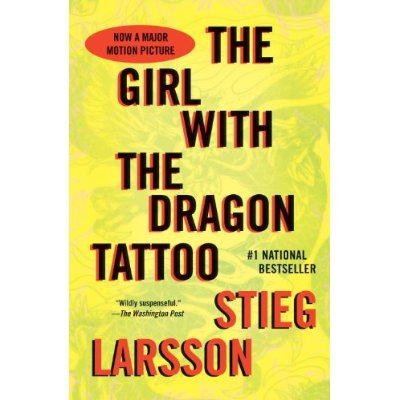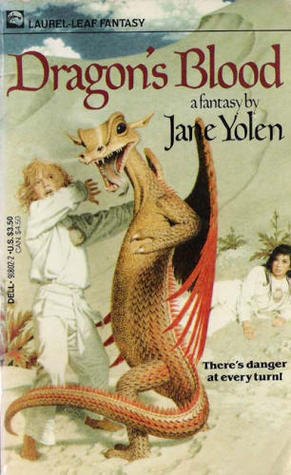This is the first book in the “Millennium Trilogy,” named after the magazine published by its main character, Swedish financial writer Mikael Blomkvist. The six-part Swedish TV miniseries based on these books is packaged in the U.S. as the “Dragon Tattoo Trilogy.” American audiences can now see a big-screen version of this book, starring Daniel Craig in the role of Mikael “Kalle” Blomkvist, a crusading journalist who (like the author who created him) specializes in exposing right-wing corruption—though, unlike Larsson, he does so mainly in the context of business. He is nicknamed “Kalle Blomkvist” after an Astrid Lindgren character known to all Swedes today, but whose stories have not come over to the U.S. in a big way. Adding still more confusion to this background is the fact that the book’s original, Swedish title translates as “Men Who Hate Women,” so if you try to start a conversation about this book with an acquaintance from Sweden, you are apt to get a blank look.
While you probably know already that this trilogy came out quite recently and is all the rage on both sides of the Atlantic, you might be surprised to learn that Stieg Larsson is no longer around to clear up any confusion or ambiguities in his books. Larsson, age 50, died of a sudden heart attack in 2004 after climbing seven flights of stairs to his office when the elevator was broken (source: Wikipedia). Keep your elevators in running order, people! We can’t afford to lose good writers like that! At the time of his death, the Millennium Trilogy was only an unpublished manuscript, and a half-written fourth book was saved on the author’s computer. Now see how far it has gone! Unfortunately, conflicting inheritance claims make it unlikely that any of us will live to see Book 4, finished or otherwise. So if you are as crazy about this book as millions of other readers, you will have to settle for the two sequels already published: The Girl Who Played with Fire and The Girl Who Kicked the Hornets’ Nest (whose Swedish title means “The Air Castle that Was Blown Up”).
It is obvious from these titles that the American market is more interested in the character of Lisbeth Salander, a 24-year-old, starved-looking, tattooed, pierced, socially awkward genius hacker who provides highly detailed background research for the clients of a major security firm, while at the same time living under a guardian because she is considered legally incompetent. I don’t know if this is a result of something like Asperger’s Syndrome (which Mikael Blomkvist suspects) or because of some kind of childhood trauma. (The Swedish telefilm, which I watched just after I read this book, drops some hints in that direction, but the book stays mum.) Diffident, self-contained, and elusive, Lisbeth is a hard person to get to know.
Salander gets to know Blomkvist long before he even knows she exists. She digs up his background for a prospective employer, who then hires Blomkvist in the aftermath of a disastrous libel conviction. In exchange for some real dirt on the white-collar gangster who set him up, Blomkvist agrees to write the family history of one of the oldest family-owned industrial firms in Sweden. Henrik Vanger, the retired CEO of the Vanger Corporation, sets the left-wing Blomkvist this unpleasant task mainly as a cover, while his real job is to try to solve the 40-year-old mystery of who killed a beautiful teenager named Harriet. One day, while the only bridge onto the family-owned island of Hedeby was blocked by an accident, Harriet disappeared and was never seen again. Since then, every year on Henrik Vanger’s birthday, the old man has received a pressed flower like the ones Harriet used to give him. Vanger thinks the murderer is taunting him. He is convinced the killer is a member of his big, dysfunctional family, that Harriet was killed to hurt him, and that the flowers represent a 40-year campaign to drive the family patriarch insane.
At first unenthusiastic about his chances of finding anything that 40 years of police work might have missed, Blomkvist quickly realizes that he is onto something. A cryptic note in the back of Harriet’s diary leads him to suspect that the girl was killed while trying to expose a serial killer in the family. Once Blomkvist brings Salander on board as his research assistant (the beginning of a relationship too complex to be missed, almost too explosive to be believed), the case starts to crack open like lake ice at the spring breakup. Suddenly both the girl with the tattoo and the journalist with a crusader’s heart find themselves in terrible danger. And the truth turns out to be far weirder than either of them imagined.
Lisbeth Salander is, make no mistake, a fascinating character. Her fascination affects the men around her in fascinating ways. While they worry that she may be the perfect victim for a male predator who likes to hurt women, Lisbeth proves surprisingly resourceful, not to say relentless, in deflecting danger back onto the “men who hate women.” And when you get down to brass tacks, violence against women is what this book is really all about. A lingering stench of Swedish Nazism, a brusque polemic against financial journalists who toady up to big-business interests, a subplot about corporate espionage in the journalistic field, and some “adult content advisory” worthy bedroom scenes add dimension to the tale; but what will really shock you, what will echo in your mind, what will haunt your dreams for days after you open this book, are the statistics of violence against women, including physical assault as well as rape and murder, quoted at strategic points throughout this book… and the steps the Girl with the Dragon Tattoo would take to punish the men who perpetrate it.



